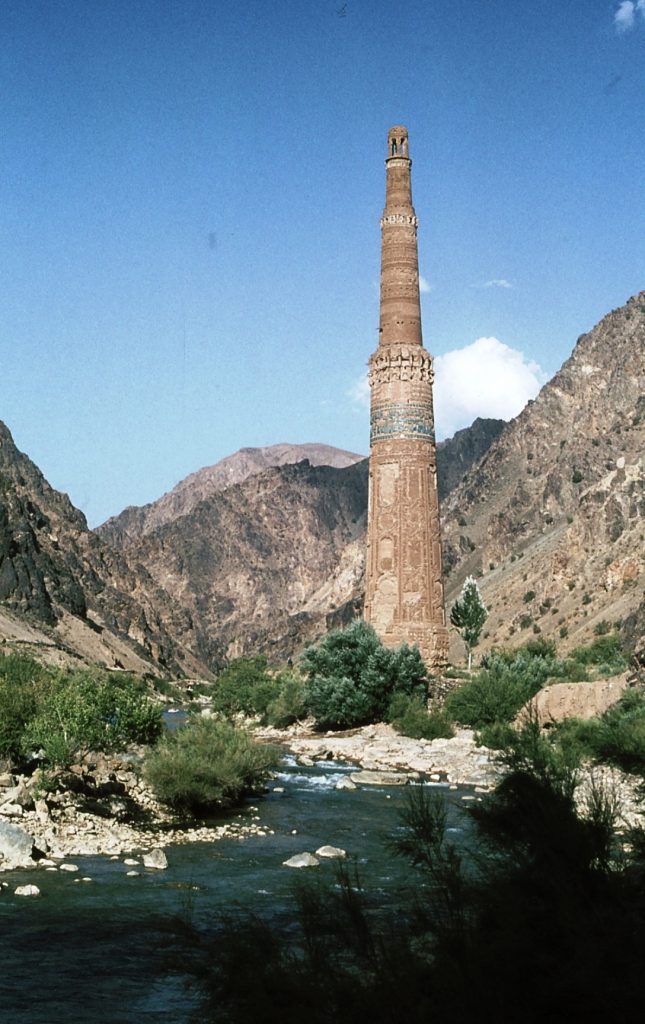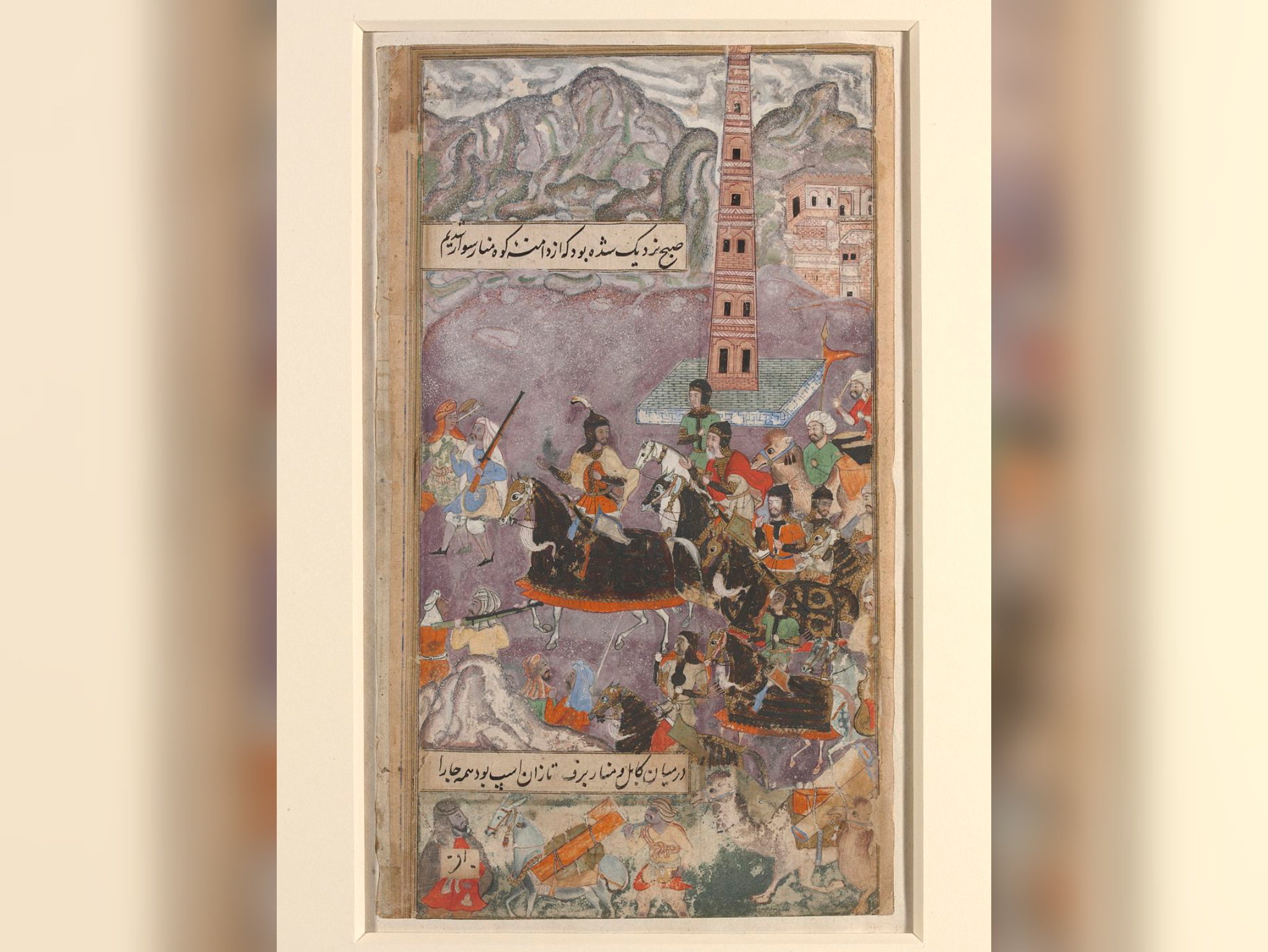The Minaret of Jam stands as a testament to the architectural and artistic mastery of the 12th century in western Afghanistan. As a UNESCO World Heritage Site, this majestic structure, reaching a soaring height of 65 meters, symbolizes cultural heritage and historical significance. This comprehensive guide delves into this remarkable monument’s rich history, outstanding universal value, and ongoing conservation efforts.
Understanding the Minaret of Jam
The Minaret of Jam, situated in the remote Shahrak District of Ghor Province, Afghanistan, is prominent in Islamic architecture. It was built entirely of baked bricks around 1190. Its intricate design features elaborate brickwork adorned with stucco and glazed tile decorations. The minaret’s facade showcases alternating bands of kufic and Naskhi calligraphy, geometric patterns, and verses from the Qur’an, reflecting the artistic sophistication of the era.
Significance and UNESCO Recognition
Designated as a UNESCO World Heritage Site in 2002, the Minaret of Jam embodies outstanding universal value across multiple criteria. Its architectural brilliance, historical significance, and cultural importance contribute to its global recognition. The minaret’s location within the rugged landscape of the Hari River valley adds to its dramatic allure, highlighting its role as a symbol of Islamic heritage and architectural excellence.
Etymology and Historical Context
The term “minaret,” derived from Arabic, traditionally refers to a tower adjacent to a mosque, serving as a visual marker and a platform for the call to prayer. However, the Minaret of Jam is a unique architectural marvel, transcending traditional definitions. Believed to be located at the site of the Ghurid Dynasty’s capital, Firozkoh, the minaret’s construction reflects the cultural and religious significance of the region during the 12th and 13th centuries.

Architectural Features and Influences
The circular minaret, resting on an octagonal base, features intricate brickwork and resembles other Islamic monuments of the era, such as the Ghazni minarets. Its design, with two wooden balconies and a lantern atop, highlights the fusion of artistic styles and architectural influences in Central Asia, Iran, and Afghanistan during that period.
Archaeological Landscape and Surrounding Remains
The archaeological landscape surrounding the Minaret of Jam includes the ruins of a palace, fortifications, a pottery kiln, and a Jewish cemetery. These remnants offer insights into the lost city of Turquoise Mountain and the Ghurid civilization’s historical legacy. Ongoing research and analysis, facilitated by high-resolution satellite imagery and archaeological surveys, continue to uncover the mysteries of this ancient site.
Historical Significance and Interpretation
The historical context surrounding the Minaret of Jam is intertwined with the rise and fall of the Ghurid Empire, which once controlled vast territories spanning Afghanistan, Iran, Central Asia, and Northern India. The minaret’s construction may commemorate significant events, including military victories or the spread of Islam into the Indian subcontinent, underscoring its symbolic importance in shaping regional history.

Conservation Challenges and Efforts
Despite its UNESCO recognition, the Minaret of Jam faces numerous conservation challenges, including erosion, water infiltration, earthquakes, and looting. Political instability and limited resources have hindered efforts to preserve this cultural treasure. UNESCO initiatives, such as 3D scanning and hydraulic measurements, aim to assess and mitigate the structural vulnerabilities of the minaret, laying the groundwork for future conservation endeavors.
Future Prospects and Community Engagement
The preservation of the Minaret of Jam requires collective action and community engagement. Initiatives to raise public awareness, promote sustainable tourism, and safeguard cultural heritage are essential for ensuring this historic site’s long-term protection and integrity. By fostering partnerships between local authorities, international organizations, and academic institutions, we can uphold the legacy of the Minaret of Jam for future generations to cherish and admire.
Conclusion: Preserving a Legacy for Future Generations
In conclusion, the Minaret of Jam is a testament to human ingenuity, artistic expression, and cultural heritage. Its enduring presence amidst the rugged landscape of western Afghanistan serves as a beacon of resilience and inspiration. As we strive to protect and preserve this architectural marvel, we honor the legacy of the Ghurid civilization and reaffirm our commitment to safeguarding the cultural treasures of our shared humanity. Let us join hands in preserving the Minaret of Jam for generations to come, ensuring its beauty and significance continue enriching our world for centuries ahead.
FAQs about the Minaret of Jam
What is the Minaret of Jam?
The Minaret of Jam is a historical monument in western Afghanistan, recognized as a UNESCO World Heritage Site. It is a 65-meter-tall structure adorned with intricate brickwork and elaborate decorations dating back to the 12th century.
Where is the Minaret of Jam located?
Situated in the remote Shahrak District of Ghor Province, Afghanistan, the Minaret of Jam overlooks the Hari River valley, surrounded by towering mountains. Its isolated location adds to its allure and historical significance.
What is the significance of the Minaret of Jam?
The Minaret of Jam holds significant cultural, historical, and architectural importance. As a symbol of Islamic heritage, it represents the artistic and engineering achievements of the Ghurid civilization during the 12th and 13th centuries.
Why is the Minaret of Jam a UNESCO World Heritage Site?
The Minaret of Jam was inscribed as a UNESCO World Heritage Site in 2002 due to its outstanding universal value. Its architectural brilliance, historical significance, and cultural heritage contribute to its global recognition and protection.
What are some unique features of the Minaret of Jam?
The Minaret of Jam features intricate brickwork, stucco decorations, and glazed tile embellishments, showcasing a blend of artistic styles and influences prevalent in Central Asia and Afghanistan during the medieval period.
What are the conservation challenges facing the Minaret of Jam?
The Minaret of Jam faces conservation challenges such as erosion, water infiltration, earthquakes, and looting. These threats jeopardize the structural integrity and long-term preservation of this cultural treasure.
What efforts are being made to conserve the Minaret of Jam?
UNESCO initiatives, including 3D scanning, hydraulic measurements, and structural assessments, aim to evaluate and mitigate the Minaret of Jam conservation challenges. However, limited resources and political instability hinder conservation efforts.
How can individuals contribute to the preservation of the Minaret of Jam?
Individuals can contribute to the preservation of the Minaret of Jam by raising awareness about its cultural significance, supporting sustainable tourism initiatives, and advocating for increased conservation efforts at local and international levels.
What is the historical context surrounding the Minaret of Jam?
The Minaret of Jam is associated with the Ghurid Empire, which once controlled vast territories across Afghanistan, Iran, and Northern India. Its construction may commemorate significant events, reflecting the empire’s historical legacy and influence.
What is the future outlook for the Minaret of Jam?
Preserving the Minaret of Jam requires collaborative efforts between local communities, governmental agencies, and international organizations. By prioritizing conservation initiatives and promoting community engagement, we can ensure this iconic landmark’s continued protection and appreciation for future generations.






